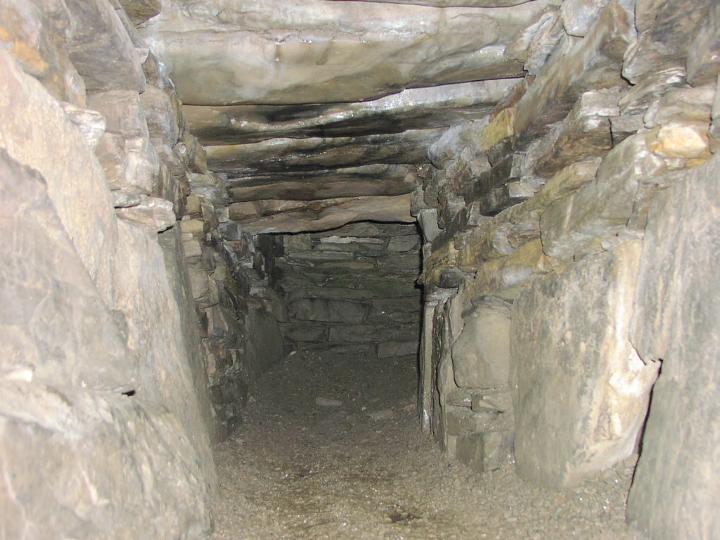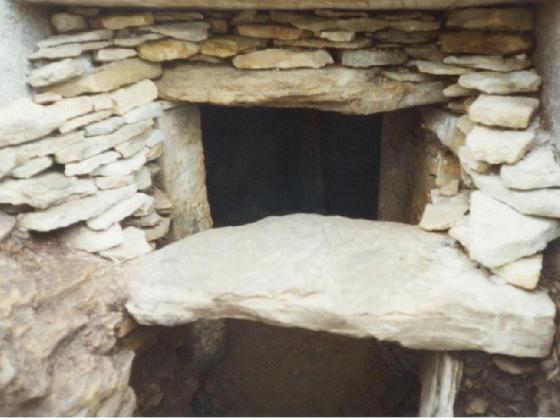
13 April 2017 CE

13 April 2017 CE

13 April 2017 CE

LH side from surface

RH side from surface

near RH side from ladder

LH from S pillar via W pillar to passage & N pillar

near LH quadrant seen from passage, with skull niche behind ladder and S pillar where rest found [left side here]

far left quadrant from eastern side

vicinity of S pillar, skulls found at right side here

west pillar

south pillar with packing stones on top

eastern side of south pillar – skulls found by right side here

RH side from new entrance to N pillar and passage

RH side; passage, N pillar, niche, E pillar

RH side; N pillar, niche, E pillar, double niche [lower part my ‘slot’]

north pillar

east pillar with packing stone on top

inner end of passage showing bedrock chamber cuts into

LH side of passage

chamber from passage, L-R; north and east pillars, skull niche, south and west pillars

near end of chamber

modern entrance

modern entrance end

original entrance

other side ‘chamber’ with recesses

side ‘chamber’ with recesses

The modern entrance takes you straight down into the main chamber – with 2 ‘cupboards’(ahem) – which would originally been at the far end of the souterrain

The passage towards the original entrance from the chamber

End of passage and a side chamber

Along the passage from the original entrance into the main chamber where the ‘modern’ entrance is. It was a bit of a squeeze....

The length of the souterrain:
The grille on the ground nearest the camera is at the furthest end of the souterrain. You can see Moth just climbing out of the entrance which is at the other end.

The square entrance with metal ladder doesn’t exactly ‘invite’, does it?

Visited 10.6.12
This H.S. site is very easy to access being sign posted off the main road.
We parked at the top of the drive to the farm and myself, Dafydd and Sophie walked down towards the farm.
We found the Souterrain easy enough and I carried Sophie down the metal ladder while Dafydd made his own way down. This was Sophie’s first visit to a Souterrain (well, she is only 18 months) and I was unsure how she would react once inside. I needn’t have worried, as like her brother, she didn’t think twice before toddling down the very low passage. In fact it was so low even Dafydd had to duck – Sophie was just able to remain upright.
The roof for the main chamber is supported by four pillars approximately 1.5m tall.
There are 3 small dark alcoves off the main chamber.
On the way back up the ladder Sophie thought it would be good fun to drop the metal grill on Dafydd’s head – luckily it was tied with rope to prevent such things from happening!
Well worth a visit – bring a torch.
Must stress again [after what I saw today] that this is no walk-in, no incline or few steps but a narrow metal ladder going down. Gate no longer stiff. Coming along the farm road you can look across to the remains of Ingshowe broch. At low tide the shallowness of the inlet means it hasn’t been that long archaeologically since it was dry land.
Rennibister souterrain was ‘discovered’ in the 20th century when it collapsed under the weight of a tractor passing over it!
It has since been reconstructed and is really impressive. The Historic Scotland information board describes how it was a underground food store, it’s entrance within the floor of a round house.
I had always been put off by the idea of crawling through the 2’ square entrance passage and then this last month I find there is a ladder down from the top like at Wideford Hill Cairn!
If only the gate in the fence around it wasn’t so stuck , the bolt took a lot of convincing to come back across. Down inside I turned around and felt almost hemmed in . As you descend you notice the uppermost corbelling and the flat ‘roof’ are painted grey to show they’re not original. Around the sides are several rectangular niches. Opposite the ladder off the bottom is the entrance passage, easier than the dimensions make you think but with damp gravel on the floor. Looking in there was light beyond that made me believe the other end still open (thirty foot long I was once told) but out in the open it probably needs more than the cursory search that I made.
The first time I went, sans camera, it was well illuminated inside. When I went back again even though the sunshine did not appear much less the interior was mostly in the shadows. This is another of those places best suited to a compact camera (digital for extensive depth of focus) and flash.
RCAHMS NMRS record no. HY31SW 3 at HY39731260. This site came to light on a Friday afternoon when a steam threshing mill broke through the surface and became stuck. John Mooney and WilliamTraill came the same day for a look over and on the next Traill and Dr.Marwick gave “a more thorough examination”. Its walls are a mix of large ?natural boulders and small quarried stones. The corbelled roof sits on four stones a yard apart, slightly over a foot from the walls and and roughly foursquare [that they are unequal in height suggests to me a possible origin as standing stones]. This oval gallery chamber is 15’3” NW/SE by 8’6”, with a 27"x30” passage running approximately 10’ from the NW end that is lintelled by oversized untooled slabs. In the walls there are several rectangular niches [including a slot near the floor on the RH side] all of which were empty except for a skull in that opposite the entrance [I assume the one behind the ladder]. More skulls were found about the inner side of the “south pillar”. A mass of other bones were also found. At the outer end of the passage was shell midden material [ritual sealing ?]. All of this from report in “The Orkney Herald” of November 17th 1926. Viewed from the new entrance running clockwise the stones are southerly [LH near], westerly [LH far], northerly [RH far], easterly [RH near].
chamber photo















































































































































































































